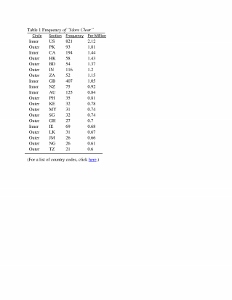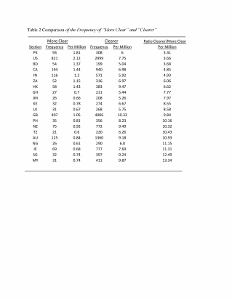|
The Corpus of Global Web-Based English (GloWbE),
released in April 2013, is freely available here. With 1.9 billion words
from nearly 2 million web pages from 20 English-speaking countries, it
uses the familiar interface of other Mark Davies corpora such as the
Corpus of Contemporary American English. For those not acquainted with
the other corpora developed by Mark Davies, the site has brief
explanations of the major features and a 5-minute tour that illustrates
various types of searches.
The countries represented in GloWbE include inner, outer, and
expanding circle Englishes: the United States, Canada, Great Britain,
Ireland, Australia, New Zealand, India, Sri Lanka, Pakistan, Bangladesh,
Singapore, Malaysia, the Philippines, Hong Kong, South Africa, Nigeria,
Ghana, Kenya, Tanzania, and Jamaica. A helpful feature of the corpus is
the ability to exclude countries and groups of countries to make
comparisons. So it is possible to compare North American English—spoken
in the United States and Canada—with British English, to focus on
regions such as Southeast Asia, or to look at the English of the
different circles.1
To acquaint myself with GloWbE, I used it to investigate the
use of more clear, a phrase which I have been
hearing—and reading—frequently in the United States. I speculated that
perhaps the outer circle countries were influencing the traditional
formation of comparative adjectives in U.S. English.
My speculation was not supported. As seen in Table 1, in GloWbE
both the absolute frequency and frequency per million words of more clear is greatest in the United States, but the
countries with the least frequent occurrences per million words tend to
be outer circle countries. Of the 10 countries at the bottom of the
frequency list, only Ireland is not an outer circle country.
Table 1 Frequency of More Clear (click to enlarge)

(For a list of country codes click here)
Searching GloWbE for more clear and then clearer gave the results shown in Table 2. As seen,
the traditional clearer is still more common in the
United States as it is in all of the countries represented in GloWbE.
Pakistan had the smallest frequency per million ratio, 3.31, meaning
that clearer occurred in GloWbE only a little more
than three times as frequently as did more clear.
Pakistan was followed by the United States with a frequency ratio of
3.66. However, clearer occurs over 10 times more
frequently than more clear in the Philippines, New
Zealand, Tanzania, Australia, Nigeria, Ireland, Singapore, and Malaysia.
Once again, it does not appear that the outer circle countries are
influencing the United States.
Table 2 Comparison of the Frequency of More Clear and Clearer (click to enlarge)

So what was learned from this exercise with GloWbE? The
traditional form of the comparative, clearer is still
more frequent than more clear in U.S. web pages—over
three times more frequent. Another way of saying this is that clearer is still more probable. And it is possible to
state that clearer is much more probable in many
other countries, with the ratio being over four times greater in
Malaysia than in the United States. Furthermore, contrary to my initial
speculation, there is no reason to believe that formation of the
comparative in U.S. English is being influenced by outer circle
countries’ English.
Jenkins (2006) noted several years ago that research into World
Englishes “has immense implications for TESOL practice in all three
circles and above all in terms of the kind of language we teach” (p.
171). TESOL (2008) has recognized in a position statement that,
as a result of complex economic, cultural, and technological
forces, such as the growth of international trade and the Internet, the
English language is now used worldwide, with a geographic spread unique
among all world languages. . . . As a result, the vast majority of those
using English worldwide are themselves nonnative speakers. This has had
a profound effect on both the ways English language teaching (ELT) is
practiced and the language itself.
GloWbE will be helpful to scholars and teachers interested in
the “diverse users and uses of English” in inner, outer, and expanding
circle countries (Bolton, Graddol, & Meierkord, 2011, p. 474).
For me, GloWbE provided data to disconfirm my speculation that was based
on intuition. I can now say with some confidence that although more clear is relatively frequent on U.S. websites, clearer still predominates, and that the use of more clear on U.S. websites does not appear to result
from outer circle influences.
Yet I have not explained the reason for the variation in
comparative forms apparent among the 20 different English-speaking
countries represented in GloWbE. As pointed out some years ago by
Celce-Murcia and Larsen-Freeman (1999),
the “rules” . . . for the comparative inflection are not as
rigid as those for the plural or past-tense inflections. We regularly
hear English speakers use a periphrastic form for emphasis . . . when
the “rule” would predict the inflection. There is also some individual
variation. (p. 721)
A follow-up to the quantitative analysis above would be a
qualitative examination of the GloWbE data to investigate
sociolinguistic variation in the use of more clear in
web pages.
Note
1 Inner Circle countries are the traditional English-speaking
countries; Outer Circle countries are those where English is used as an
institutionalized, official language, though it may be an additional
language for many; and the Expanding Circle countries are those where
English does not have an official status, but is used in commerce and is
studied as a foreign language. See Table 1 for a
classification.
References
Bolton, K., Graddol, D., & Meierkord, C. (2011).
Towards developmental world Englishes. World Englishes, 30, 459–480.
Celce-Murcia, M., & Larsen-Freeman, D. (1999). The grammar book: An ESL/EFL teacher’s course (2nd
ed.). Boston, MA: Thomson Heinle.
Jenkins, J. (2006). Current perspectives on teaching world
Englishes and English as a lingua franca. TESOL
Quarterly, 40, 157–181.
TESOL. (2008). Position statement on English as a
global language. Retrieved from http://www.tesol.org/docs/pdf/10884.
Roger W. Gee is a Professor at Holy Family University in Philadelphia, Pennsylvania, USA where he is the Director of the Masters in TESOL and Literacy Program. His interests are second language literacy, language and literacy assessment, and the use of corpora in teacher education. |

